Juvenile
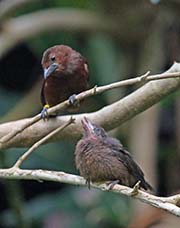
Fledgling begging for food
10/10/2013 - Woodland Park Zoo, Seattle, WA
Fledgling begging for food
10/10/2013 - Woodland Park Zoo, Seattle, WA
|
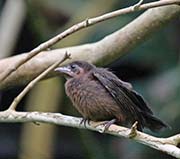
Fledgling
10/10/2013 - Woodland Park Zoo, Seattle, WA
Fledgling
10/10/2013 - Woodland Park Zoo, Seattle, WA
|
|
Adult
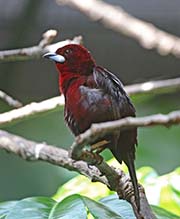
Male
04/23/2012 - Houston Zoo, Texas
Male
04/23/2012 - Houston Zoo, Texas
|
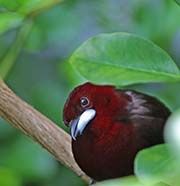
Male
05/22/2012 - Academy of Sciences, San Francisco, CA
Male
05/22/2012 - Academy of Sciences, San Francisco, CA
|

Male - note the tongue
05/22/2012 - Academy of Sciences, San Francisco, CA
Male - note the tongue
05/22/2012 - Academy of Sciences, San Francisco, CA
|
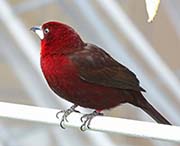
Male
01/17/2013 - San Francisco Zoo, CA
Male
01/17/2013 - San Francisco Zoo, CA
|
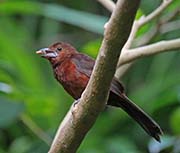
Female
10/10/2013 - Woodland Park Zoo, Seattle, WA
Female
10/10/2013 - Woodland Park Zoo, Seattle, WA
|

Female
10/10/2013 - Woodland Park Zoo, Seattle, WA
Female
10/10/2013 - Woodland Park Zoo, Seattle, WA
|
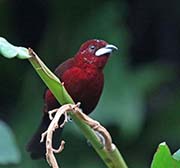
Male
10/10/2013 - Woodland Park Zoo, Seattle, WA
Male
10/10/2013 - Woodland Park Zoo, Seattle, WA
|

Male
10/10/2013 - Woodland Park Zoo, Seattle, WA
Male
10/10/2013 - Woodland Park Zoo, Seattle, WA
|
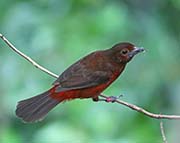
Female
02/05/2014 - Academy of Sciences, San Francisco, CA
Female
02/05/2014 - Academy of Sciences, San Francisco, CA
|
Diet:
Silver-beaked Tanagers mostly eat insects and fruit. Sometimes they may also eat flowers
and nectar.
They forage from the ground up, occasionally to the canopy.
Courtship:
Silver-beaked Tanagers are considered a social bird and live in small groups of 4-10 birds.
When flying, group members follow the leader closely and before they fly, they
flick wings and tail.
Courtship display includes pointing the bill skyward showing the bright lower mandible.
When threatened, they assume an erect and crouch postures and silently gapes.
Nesting:
The female builds the deep compact cup nest made of dead leaves and fibers and
usually placed in a bush.
Two green-blue eggs are laid on consecutive days.
Both parents feed the young.
Habitat and Range:
Silver-beaked Tanagers are found from eastern Colombia and Venezuela south to Paraguay and
central Brazil and on Trinidad.
They prefer second growth and bushy habitats ins semi-open situations at forest edge,
along rivers, lakes, and roadway, and in savannas, cultivated areas and abandoned
plantations.
Vocalization:
They vocalize frequently and have a variety of calls including an alarm call, a Dawn
song and a Day song.
Plumage/Molt:
No alternate plumage and probably molt annually like other Tanagers.
Migration:
Not migratory.
Tongue/feet:
Gray feet and legs. The tongue is thinnish and pointed.
Bibliography:
- http://en.wikipedia.org The Free Encyclopedia, Accessed June, 2013
- Isler, Morton L. and Isler, Phyllis R., The Tanagers: Natural History, distribution, and Identification,Smithsonian Institution Press, Washington D.C., 1987
Top of Page










